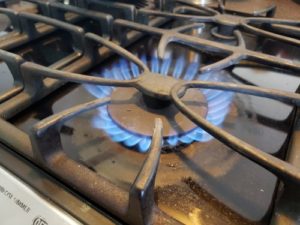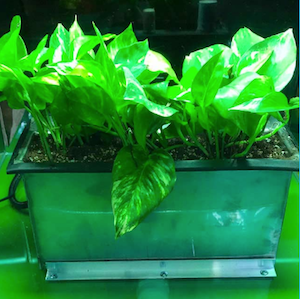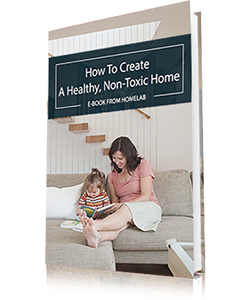Conventional paint contains many volatile organic compounds, or VOCs, that “outgas” and escape into the air after they are applied. Indoors, these VOCs cause headaches, nausea, achey bones, and general discomfort. Outdoors, they contribute to smog and air pollution.
Whether for indoors or out, your best bet is to buy low- or no-VOC paint. You’ll find it offered by more than a dozen companies in thousands of colors and in standard eggshell, glossy, and semigloss finishes. You can also select no-VOC water-based stains, finishes, and paint stripper.
For specific recommendations, check out the brands that have been independently certified for health and sustainabilityby Green Seal or EcoLogo.
To get the most out of the paint you use:
Buy only what you need. Measure carefully. It’s better to go back for more than to be stuck with too much leftover paint you can’t use.
Prevent paint from drying out. Cover the paint can with plastic wrap, hammer the lid securely back into place, and store the paint upside down.
Use up stored paint. Apply it for touch-up jobs or smaller projects. Blend similar colors for larger jobs; use as a primer.
Donate leftover paint. Schools, churches, community groups, and kids’ clubs may be looking for a free way to give their buildings a face-lift, and you can take a tax deduction when you make the gift.
Don’t pour paint down the drain. You can rinse latex paint off brushes, but otherwise leave leftover paint you can’t use in open cans in a protected outdoor shed. When the paint air-dries, you can throw it away.
Circulate air. Keep windows open and fans blowing to move air- and paint fumes- out of the house. Avoid as much indoor air pollution as possible.
Lead alert: If your home was painted prior to 1978, the paint probably contains lead. Lead dust is extremely toxic, especially to children and pets. Before you paint, take the precautions recommended on the Environmental Protection Agency’s Web page “Lead in Paint, Dust in Soil.” In short, never sand lead paint. Call on a professional certified in lead-paint abatement, whether the paint is indoors or outside where pets and wildlife can be exposed.

















3 thoughts on “Eco-Friendly Paint Keeps You & the Planet Healthy”
Do you know how durable no and low VOC paint is? A few years ago, I read an article where several professional painters weren’t happy with the performance of no and low VOC paint because it had to be repainted every two years or so. I can’t find anything to confirm or deny this. Have you?
I repainted my home with Pure Performance no VOC paint about four years ago, and it’s really held up well. I think paint quality is improving all the time; I have had no complaints with the paint I’ve used.
Wow – thanks so much for the heads up! I’ll check it out, too.
Comments are closed.